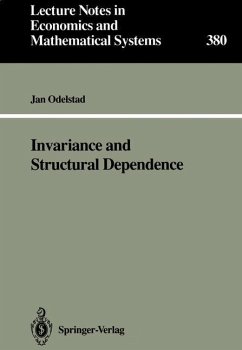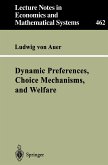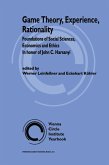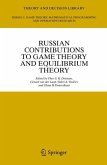This book deals with the notices of structural dependence and independence, which are used in many applications of mathematics to science. For instance,a physical law states that one physical aspect is structurally dependent on one or more other aspects. Structural dependence is closely related to the mathematical idea of functional dependence. However, functional dependence expresses a kind of complete dependence while structural dependence includes partial dependence. Further, structural dependence is primarily thought of as a relation holding between aspects rather than between their measures. In this book, the traditional way of treating aspects within measurement theory is modified. An aspect is not viewed as a set-theoretical structure but as a function which has sets as arguments and set-theoretical structures as values. This way of regardingaspects is illustrated with an application to social choice and group decision theory. Structural dependence is connected with the idea of concomitant variations and the mathematical notion of invariance. A distinction between dependence in the sense of determination and in the sense of relevance is drawn.
Structural dependence both in the sense of determination and of relevance can be found in degrees from complete determination and relevance to complete undetermination and irrelevance. The possibility of different "scales" of determination and relevance is considered. One chapter of the book is devoted to a study of the dependence relation between the social ordering and the individual orderings in (social choice and group decision theory.)
This is a revised version of a doctoral thesis, submitted in mimeographed fonn to the Faculty of Arts, Uppsala University, 1988. It deals with the notions of struc tural dependence and independence, which are used in many applications of mathe matics to science. For instance, a physical law states that one physical aspect is structurally dependent on one or more other aspects. Structural dependence is closely related to the mathematical idea of functional dependence. However, struc tural dependence is primarily thought of as a relation holding between aspects rather than between their measures. In this book, the traditional way of treating aspects within measurement theory is modified. An aspect is not viewed as a set-theoretical structure but as a function which has sets as arguments and set-theoretical structures as values. This way of regarding aspects is illustrated with an application to social choice and group deci sion theory. Structural dependence is connected with the idea of concomitant variations and the mathematical notion of invariance. This implies that the study of this notion has roots going back to Mill's inductive logic, to Klein's Erlangen Program for geome try and to Padoa's method for proving the independence of symbols in formal logic.
Structural dependence both in the sense of determination and of relevance can be found in degrees from complete determination and relevance to complete undetermination and irrelevance. The possibility of different "scales" of determination and relevance is considered. One chapter of the book is devoted to a study of the dependence relation between the social ordering and the individual orderings in (social choice and group decision theory.)
This is a revised version of a doctoral thesis, submitted in mimeographed fonn to the Faculty of Arts, Uppsala University, 1988. It deals with the notions of struc tural dependence and independence, which are used in many applications of mathe matics to science. For instance, a physical law states that one physical aspect is structurally dependent on one or more other aspects. Structural dependence is closely related to the mathematical idea of functional dependence. However, struc tural dependence is primarily thought of as a relation holding between aspects rather than between their measures. In this book, the traditional way of treating aspects within measurement theory is modified. An aspect is not viewed as a set-theoretical structure but as a function which has sets as arguments and set-theoretical structures as values. This way of regarding aspects is illustrated with an application to social choice and group deci sion theory. Structural dependence is connected with the idea of concomitant variations and the mathematical notion of invariance. This implies that the study of this notion has roots going back to Mill's inductive logic, to Klein's Erlangen Program for geome try and to Padoa's method for proving the independence of symbols in formal logic.








